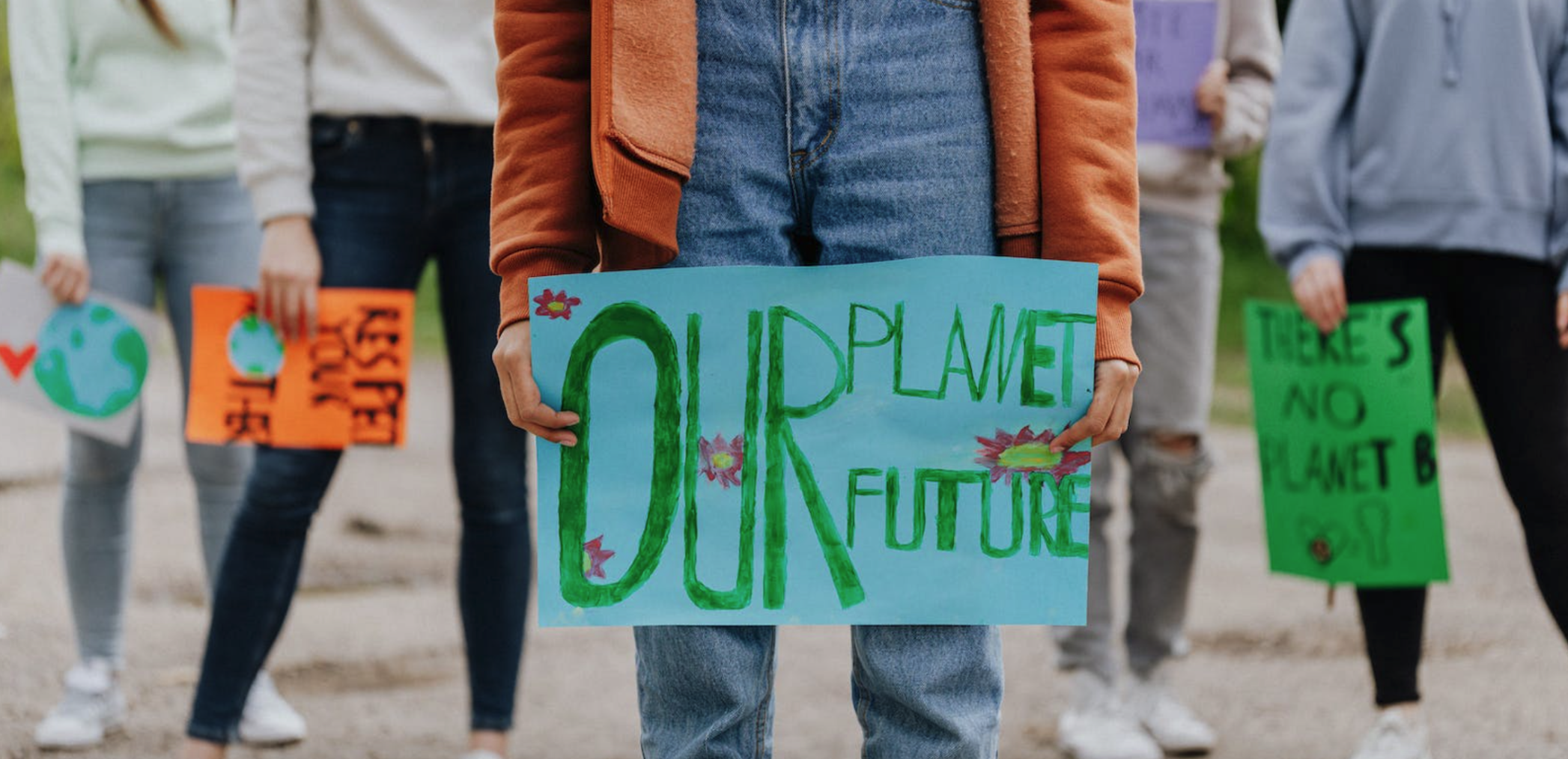
Kids are Feeling the Heat
Brenda Hamm | October 04, 2023

Schools are all about the future and the potential of our children and what they will become or do. But what if students in your school aren’t feeling terribly optimistic about that future? There is growing evidence that climate change is having an impact on kids’ mental health, on their attitudes regarding future opportunities, and on their trust in adults. In 2021 the results of an extensive multicountry survey, that included the USA, were published in The Lancet Planetary Health. The authors concluded that, “Climate change has important implications for the health and futures of children and young people, yet they have little power to limit its harm, making them vulnerable to climate anxiety.”(1) The results of the survey revealed clear mental health impacts of climate change:
Respondents across all countries were worried about climate change (59% were very or extremely worried and 84% were at least moderately worried). More than 50% reported each of the following emotions: sad, anxious, angry, powerless, helpless, and guilty. More than 45% of respondents said their feelings about climate change negatively affected their daily life and functioning, and many reported a high number of negative thoughts about climate change (e.g., 75% said that they think the future is frightening and 83% said that they think people have failed to take care of the planet)(2)
As the pace of global warming accelerates, climate disasters are becoming commonplace. Students are well aware of such events. Devastating wildfires in Greece, Canada, and Hawai’i, record heat in Europe, China, and Arizona, horrific flooding in Libya, and deadly drought in Somalia and Chile were all over social media as well as the news. But if we’re not directly impacted, do we actually have to be concerned? The answer is, yes. According to Charles Schmidt’s article, “Climate Anxiety,” in The Magazine of Harvard Medical School, “For many young people, worry over threats of future climate change results in panic attacks, insomnia, obsessive thinking, and other symptoms. And those feelings are often amplified by a pervasive sense that older people aren’t doing enough to fix the climate problem.”(3)
The good news is that independent schools are uniquely situated to be part of the solution by helping students develop agency regarding their future, particularly as it is impacted by climate change. Here’s how.
Acknowledge that climate-anxiety or eco-anxiety is real and reasonable. According to scientists at NASA’s Goddard Institute for Space Studies (GISS), July 2023 was hotter than any other month in the global temperature record. Climate concerns are perfectly rational given the information we now receive on a daily basis. Be sure that staff are not dismissing students’ concerns but instead are discussing them in a supportive way and focusing on building resilience in the face of an existential threat.
Curriculum. If students are to develop agency then they will also need critical thinking and planning skills and the ability to communicate clearly. Review your curriculum to be sure it includes the math and science behind climate change. History and civics play an important role. When students don’t feel that current government or business leaders are paying enough attention to climate change they should be able to understand why that might be and how they, with or without the ability to vote, can be part of the civic discourse. When thinking about agency, don’t forget mindfulness, or the ability to express feelings or ideas creatively through the arts, poetry, or literature.
Personal Action. After learning comes understanding the personal role one can play in addressing the problem. Feeling connected to the possible solutions to our climate dilemmas instills a problem-solving mentality and inspires hopeful thinking about the future of the planet. Students acting in ways that are in alignment with a sustainable life is a starting point.
Social Action. There are no quick fixes to climate change, which flies in the face of the needs of most students to see the results of their actions quickly. One way to mitigate this dilemma is through finding a shared purpose with others. Are students creating organizations within your school that address climate change? Are they connecting with groups from other schools focused on the environment? Are they aware of groups outside of schools? Nationally there are many student-led organizations making their presence known in the climate arena. Fridays for Future (https://fridaysforfuture.org/), One Up Action (https://oneupaction.org/), and Youth 4 Nature (https://www.youth4nature.org/) are just three such groups.
Modeling. There are so many ways a school can model its commitment to climate health. Ensure that all new construction is done with the environment in mind. Increase the use of solar and wind energy. Publicly make strides in reducing fossil fuel use and your carbon footprint. Retrofit current buildings with heating and cooling systems that are climate friendly. Install charging stations for electric cars or create carpool systems for students as well as employees. Eliminate the use of unnecessary plastics, such as bags, utensils, and single-use bottles. Compost, recycle, and source foods as locally as possible. Grow some of your own food. When you do any of these things, be sure all of your community members know and then be open to doing more. Let a student-led group generate ideas for their school.
Schools can and should be part of the solution to students’ eco-anxiety and play a key role in the development of their own agency. Help alleviate students’ climate-anxiety by acknowledging that their response to this threat to their future is reasonable, by helping them understand they can join forces with other like-minded youth, and by giving them the tools they need to know they are part of the answer.
References:
Interested in learning more about how we can help?

EXPERTS IN SEARCH, TRANSITION & STRATEGY
©2024 Educators Collaborative. All rights reserved. | Privacy Policy
